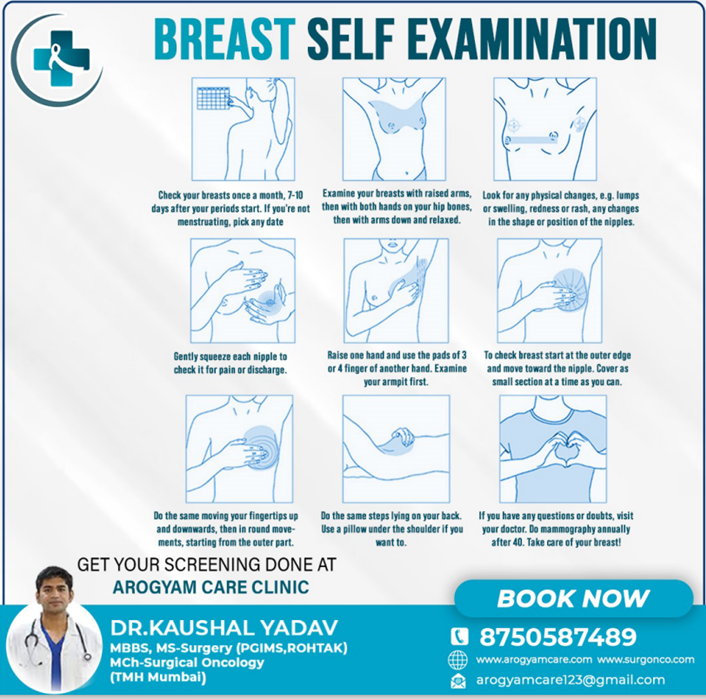why it is important to detect breast cancer early?
Breast cancer is most common cancer and most common cause of cancer related deaths in females. It’s a very disappointing that 50% of cases of breast cancer are detected in stage 3& 4 despite a known fact that stage 1 breast cancer has a cure rate of >95%. Route of this problem is that even well-educated people tend to ignore even the obvious signs of breast cancer. Less than 2% people are doing regular recommended screening despite begin beneficial for them. Many patients says that cancer appeared suddenly without any warning sign, but fact is that most of them have ignored initial signs and symptoms. Many waste crucial time in unnecessary multiple visits in different hospitals and with different doctors for a long time. Time of diagnosis and start of treatment are the most important factors in ultimate cure and recurrence. So, understand these key signs and methods for detecting breast cancer early as an effort to bridge this missing gap in early diagnosis and treatment
5 -Key Signs of Breast Cancer for detecting breast cancer early
- Lump or Thickening: Most breast cancers present as a painless lumps or thickened areas in the breast tissue. Regular self-examinations are crucial for early detection.
- Changes in Breast Shape or Size: Noticeable changes in breast shape, size, or contour should raise concern. Be vigilant about any asymmetry.
- Skin Changes: Look for skin dimpling, redness, or puckering/thickening- orange peel appearance. These changes may indicate underlying cancer.
- Nipple Abnormalities: Pay attention to nipple inversion, discharge (especially bloody or clear), or persistent itching.
- Swelling in Axilla: Lymph node may enlarge in axilla while tumor in breast may remain undetectable
While breast pain is usually not a sign of cancer, any persistent discomfort warrants evaluation.
Screening Methods: Tests to diagnose breast cancer in early stage
Screening Methods:
- Mammography:
- Mammograms are X-ray images of the breast tissue. Regular mammograms are recommended for women aged 40 and above.
- They can detect tumors before they are palpable, allowing early intervention.
- Breast Self-Examination (BSE):
- Perform BSE monthly, ideally a few days after your period ends.
- Check for lumps, skin changes, and nipple abnormalities.
- If you notice anything unusual, consult a healthcare professional promptly.
- Clinical Breast Examination (CBE):
- During routine check-ups, your doctor will perform a CBE.
- They assess breast texture, size, and any abnormalities.
- MRI and Ultrasound:
- These imaging techniques are used in specific cases, such as high-risk individuals or when mammograms yield unclear results.
Remember, early detection saves lives. Regular screenings and self-examinations empower you to take control of your breast health. Consult your doctor if you notice any concerning changes.
To Know more about breast cancer:
To download Breast self Examination Guide :
Related Video
Discover more from CancerSurgery
Subscribe to get the latest posts sent to your email.








